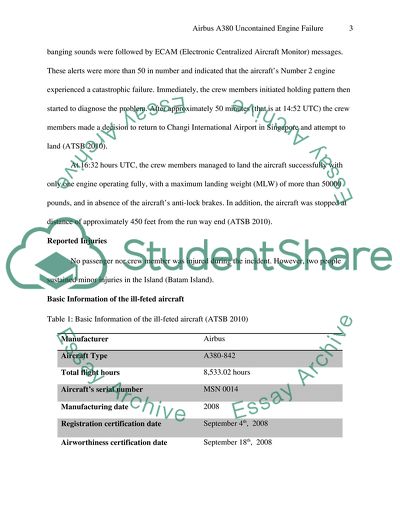Cite this document
(Analysis of Airbus A380 Engine Failure Above Bantam Island Research Paper, n.d.)
Analysis of Airbus A380 Engine Failure Above Bantam Island Research Paper. Retrieved from https://studentshare.org/technology/1619031-aircraft-maintenance-eng-aircraft-maintenance-procedures-scenario-for-systems-integration
Analysis of Airbus A380 Engine Failure Above Bantam Island Research Paper. Retrieved from https://studentshare.org/technology/1619031-aircraft-maintenance-eng-aircraft-maintenance-procedures-scenario-for-systems-integration
(Analysis of Airbus A380 Engine Failure Above Bantam Island Research Paper)
Analysis of Airbus A380 Engine Failure Above Bantam Island Research Paper. https://studentshare.org/technology/1619031-aircraft-maintenance-eng-aircraft-maintenance-procedures-scenario-for-systems-integration.
Analysis of Airbus A380 Engine Failure Above Bantam Island Research Paper. https://studentshare.org/technology/1619031-aircraft-maintenance-eng-aircraft-maintenance-procedures-scenario-for-systems-integration.
“Analysis of Airbus A380 Engine Failure Above Bantam Island Research Paper”, n.d. https://studentshare.org/technology/1619031-aircraft-maintenance-eng-aircraft-maintenance-procedures-scenario-for-systems-integration.


